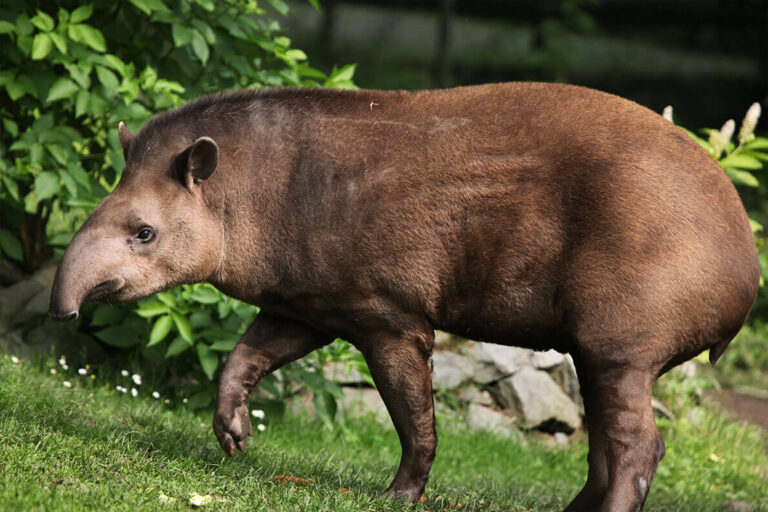Tiger: The Majestic Apex Predator
The tiger (Panthera tigris) is one of the world’s most iconic and revered animals. Known for its power, beauty, and stealth, this apex predator plays a crucial role in maintaining the balance of its ecosystem. Tigers have fascinated humans for centuries, inspiring myths, art, and conservation efforts. Below is a detailed exploration of the tiger’s biology, behavior, and relationship with humans.
Contents
Scientific Classification
- Kingdom: Animalia
- Phylum: Chordata
- Class: Mammalia
- Order: Carnivora
- Family: Felidae
- Genus: Panthera
- Species: Panthera tigris
There are several subspecies of tigers, including the Bengal tiger (P. t. tigris), Siberian tiger (P. t. altaica), Sumatran tiger (P. t. Sumatra), and the extinct Caspian tiger (P. t. virgata). Each subspecies varies slightly in size, habitat, and adaptations but share many common traits.
Physical Characteristics

Tigers are the largest members of the cat family, with males weighing up to 660 pounds (300 kg) and measuring up to 10 feet (3 meters) in length, including the tail. Females are generally smaller. Tigers have distinctive orange coats with black stripes, which provide camouflage in their natural habitats.
- Coat: The tiger’s striking coat features a pattern of dark stripes on a reddish-orange background, unique to each individual. Their underbelly and inner parts of the limbs are white.
- Teeth and Claws: Tigers have large canine teeth measuring up to 3 inches (7.6 cm) and retractable claws growing up to 4 inches (10 cm). Both are essential tools for hunting.
- Vision and Hearing: Tigers have excellent night vision and acute hearing, making them effective nocturnal hunters.
- Size Variations: Siberian tigers, the largest subspecies, are adapted to cold climates with thicker fur and larger body mass. Sumatran tigers, the smallest, are more agile and adapted to dense tropical forests.
Habitat
Tigers are found across a wide range of habitats, from the Siberian taiga to the tropical forests of Southeast Asia. Historically, their range spanned much of Asia, but due to habitat loss and poaching, tigers now occupy only about 7% of their original territory.
- Range: India has the largest population of wild tigers, while smaller populations are found in Russia, China, and Southeast Asian countries like Indonesia and Malaysia.
- Habitat Preference: Tigers prefer dense forests, mangrove swamps, grasslands, and rainforests, where they can use their striped coats for camouflage while hunting.
- Territory: Tigers are solitary animals and require large territories to support their hunting needs. Depending on prey availability, a single tiger’s territory can range from 20 to 100 square miles (32 to 160 km²).
Behavior

Tigers are primarily solitary creatures, marking and defending their territories against other tigers. However, they come together during mating seasons and when females raise cubs.
- Communication: Tigers use vocalizations like roars, grunts, and growls, as well as scent markings, to communicate. They also scratch trees and use their urine to mark territory.
- Hunting: Tigers are ambush predators, relying on stealth and strength to take down prey. They often hunt large herbivores like deer, wild boar, and buffalo by sneaking up on them and launching a quick, powerful attack. Tigers can drag prey several times their weight after a successful hunt.
- Swimming Ability: Unlike many other big cats, tigers are excellent swimmers and often cool off in rivers and lakes. They have been known to chase prey into water to catch them.
Diet
Tigers are carnivores, with a diet primarily consisting of large prey. Their hunting success depends on their ability to remain undetected until the moment of attack.
- Primary Prey: Tigers primarily hunt large herbivores like sambar deer, wild boar, gaur, and water buffalo. In some regions, they may also prey on smaller animals such as monkeys or peafowl.
- Feeding Habits: A tiger typically eats about 40–90 pounds (18–40 kg) of meat in one meal but may not hunt again for several days. They are capable of fasting for extended periods if necessary.
- Scavenging: Though rare, tigers may scavenge carrion, especially when prey is scarce.
Reproduction
Tigers do not have a specific breeding season, though most births tend to occur in the spring. Female tigers, known as tigresses, raise the cubs alone.
- Gestation Period: A tigress is pregnant for about 100–105 days, giving birth to a litter of 2–4 cubs.
- Cubs: At birth, tiger cubs are blind and weigh around 2–4 pounds (1–2 kg). The tigress nurses them and protects them fiercely from predators.
- Independence: Cubs stay with their mother for up to two years, learning essential hunting and survival skills before they leave to establish their territories.
Predators and Threats
Adult tigers have no natural predators except humans. However, cubs may fall prey to leopards, jackals, or other large predators if left unprotected by the tigress.
- Human Threats: The biggest threat to tigers is habitat destruction due to deforestation, human encroachment, and agriculture. Poaching for tiger parts, which are highly valued in traditional medicine, is another significant issue.
- Intra-species Conflict: Tigers may fight other tigers over territory, sometimes resulting in serious injury or death, particularly among males.
Conservation Status
The tiger is Endangered on the International Union for Conservation of Nature (IUCN) Red List. Fewer than 4,000 tigers remain in the wild, and they continue to face threats from habitat loss, poaching, and human-wildlife conflict.
- Conservation Efforts: Many countries with tiger populations have established wildlife reserves and anti-poaching laws. Organizations like the World Wildlife Fund (WWF) are actively involved in tiger conservation, focusing on habitat protection, anti-poaching measures, and raising awareness.
Interesting Facts
- Roaring Reach: A tiger’s roar can be heard from over 2 miles (3.2 km) away.
- Unique Stripes: No two tigers have the same stripe pattern, like human fingerprints.
- Lifespan: In the wild, tigers can live for around 10–15 years, while in captivity, they may live up to 20–25 years.
- Running Speed: Tigers can run up to 40 miles per hour (64 km/h) in short bursts.
Evolutionary History
The tiger evolved around 2 to 3 million years ago in Asia. It is part of the Panthera genus, which includes lions, leopards, and jaguars. Fossil evidence shows that prehistoric tigers roamed vast parts of Asia, adapting to different environments, from dense forests to open plains.
Over time, tigers developed unique subspecies adapted to their particular habitats. The tiger’s closest relatives are the lion and jaguar; their shared ancestor likely lived around 4 to 6 million years ago.
Relationship with Humans
Tigers have been prominent in human culture, from Hindu and Chinese mythology to ancient royal emblems. However, human-tiger interactions have been both reverential and dangerous. Tigers have occasionally attacked humans, especially in regions with scarce natural prey, leading to conflict.
Efforts to conserve tigers have grown in recent decades, with governments, NGOs, and communities working together to preserve this magnificent animal. Tigers are also popular symbols of strength, courage, and majesty.
Conclusion
The tiger remains one of the world’s most awe-inspiring animals. Its unique combination of power, beauty, and intelligence makes it an apex predator essential for maintaining the balance of its ecosystem. Despite facing severe threats from human activities, conservation efforts offer hope for the future of this magnificent species. The tiger’s survival depends on continued global commitment to protect its habitat and reduce poaching, ensuring that future generations can witness the majesty of this great cat in the wild.
- Golden Retriever Pros and Cons: What Every Pet Parent Should Know - 15 September 2025
- Cane Corso Dog Breed: Health, Care, and Lifespan - 14 September 2025
- Catahoula Leopard Dogs: Description, Temperament, Lifespan, & Facts - 21 July 2025







